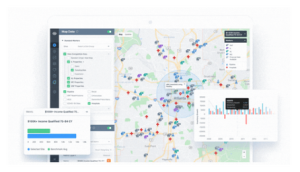Combined application for American Rescue Plan rural funding and Provider Relief Fund Phase 4 will open on September 29
The Biden-Harris Administration announced today that the U.S. Department of Health and Human Services (HHS), through the Health Resources and Services Administration (HRSA), is making $25.5 billion in new funding available for health care providers affected by the COVID-19 pandemic. This funding includes $8.5 billion in American Rescue Plan (ARP) resources for providers who serve rural Medicaid, Children’s Health Insurance Program (CHIP), or Medicare patients, and an additional $17 billion for Provider Relief Fund (PRF) Phase 4 for a broad range of providers who can document revenue loss and expenses associated with the pandemic.
“This funding critically helps health care providers who have endured demanding workloads and significant financial strains amidst the pandemic,” said HHS Secretary Xavier Becerra. “The funding will be distributed with an eye towards equity, to ensure providers who serve our most vulnerable communities will receive the support they need.”
Consistent with the requirements included in the Coronavirus Response and Relief Supplemental Appropriations Act of 2020, PRF Phase 4 payments will be based on providers’ lost revenues and expenditures between July 1, 2020, and March 31, 2021. As part of the Biden-Harris Administration’s ongoing commitment to equity, and to support providers with the most need, PRF Phase 4 will reimburse smaller providers—who tend to operate on thin margins and often serve vulnerable or isolated communities—for their lost revenues and COVID-19 expenses at a higher rate compared to larger providers. PRF Phase 4 will also include bonus payments for providers who serve Medicaid, CHIP, and/or Medicare patients, who tend to be lower income and have greater and more complex medical needs. HRSA will price these bonus payments at the generally higher Medicare rates to ensure equity for those serving low-income children, pregnant women, people with disabilities, and seniors.
Similarly, HRSA will make ARP rural payments to providers based on the amount of Medicaid, CHIP and/or Medicare services they provide to patients who live in rural areas as defined by the HHS Federal Office of Rural Health Policy. As rural providers serve a disproportionate number of Medicaid and CHIP patients who often have disproportionately greater and more complex medical needs, many rural communities have been hit particularly hard by the pandemic. Accordingly, ARP rural payments will also generally be based on Medicare reimbursement rates.
“We know that this funding is critical for health care providers across the country, especially as they confront new coronavirus-related challenges and respond to natural disasters,” said Acting HRSA Administrator Diana Espinosa. “We are committed to distributing this funding as equitably and transparently as possible to help providers respond to and ultimately defeat this pandemic.”
In order to expedite and streamline the application process and minimize administrative burdens, providers will apply for both programs in a single application. HRSA will use existing Medicaid, CHIP and Medicare claims data in calculating payments. The application portal will open on September 29, 2021. To help ensure that these provider relief funds are used for patient care, PRF recipients will be required to notify the HHS Secretary of any merger with, or acquisition of, another health care provider during the period in which they can use the payments. Providers who report a merger or acquisition may be more likely to be audited to confirm their funds were used for coronavirus-related costs, consistent with an overall risk-based audit strategy.
To promote transparency in the PRF program, HHS is also releasing detailed information – PDF (PDF – 175 KB) about the methodology utilized to calculate PRF Phase 3 payments. Providers who believe their PRF Phase 3 payment was not calculated correctly according to this methodology will now have an opportunity to request a reconsideration. Further details on the PRF Phase 3 reconsideration process are forthcoming.
Additionally, in light of the challenges providers across the country are facing due to recent natural disasters and the Delta variant, HHS is announcing today a final 60-day grace period to help providers come into compliance with their PRF Reporting requirements if they fail to meet the deadline on September 30, 2021, for the first PRF Reporting Time Period. While the deadlines to use funds and the Reporting Time Period will not change, HHS will not initiate collection activities or similar enforcement actions for noncompliant providers during this grace period.
For more information about eligibility requirements, the documents and information providers will need to complete their application, and the application process for PRF Phase 4 and ARP Rural payments, visit: https://www.hrsa.gov/provider-relief/future-payments.






